- Home
- Don Pendleton
Terror Ballot Page 2
Terror Ballot Read online
Page 2
There were no hostages secured near the front of the bank.
“Fire!” came the command in French, screamed by someone behind the counter. A hail of 7.62 mm gunfire chipped away at the alcove, raising a cloud of plaster dust and pelting Bolan with debris.
Bolan wore a green canvas war bag under his leather jacket. He holstered his Beretta, then plucked a pair of M61 fragmentation grenades from the bag. Each bomb had an effective killing radius of five yards, with casualties virtually assured within fifteen yards. Some fragments might disperse as far away, Bolan knew, as two hundred yards or more.
He armed the bombs, tossed them and ducked back into cover. Almost casually the soldier put his middle fingers over his ear canals.
The twin explosions ripped through the counter, driving fragments of it and other shrapnel from the fragmentation grenades through the bodies of the men sheltered there. The screams of agony sounded inhuman.
The Executioner was up and moving in a crouch, tracking right and left for targets. To the rear of the counter area was an arched and fluted doorway, as overbuilt as everything else in the building. Bolan knew that archway was a choke point and that more ES forces would be staged behind it.
Aaron Kurtzman had transmitted the layout of the bank directly to Bolan’s secure smartphone. If Bolan were in charge of holding hostages in the bank, he would have done just what the ES had done—establish a perimeter of shooters in the main foyer of the bank while guarding the hostages deeper within the building. That way they were secure from any grandstand plays—such as driving an armored vehicle through the front—the purpose of which was to deploy a tactical team.
He imagined the French authorities were still debating what to do, if they weren’t spending their time screaming for official intervention through government and international channels. Bolan did not envy Brognola his job.
Bolan took another grenade from his war bag. He did not pull the pin. Instead he simply rolled the lethal egg across the marble floor through the archway. It thunked heavily before skittering through the opening.
The ploy worked perfectly. Bolan would no more throw a grenade in the vicinity of hostages than he would shoot them himself, but the terrorists couldn’t know that. When the first ES gunman broke from cover to scramble for what he thought was a live grenade—no doubt thinking to throw it back the way it had come—Bolan pumped two rounds from his Beretta through the shooter’s neck.
The second man was cagier. He tried to check the arch by exposing only one eye and the barrel of his gun. That was all the target Bolan needed. A single shot blew away the back of the terrorist’s skull after tunneling through the eye socket.
The soldier pushed through the archway low and fast. The corridor beyond led to offices and the bank’s safe-deposit box area. At the end of the corridor, the hallway made a hard right turn, which led to the vault area. If he had to guess, Bolan would put the hostages in the vault, guarded by reserves.
He shifted left as gunfire tore up the wall behind him. They were shooting from within at two levels, high and low. That would be a man standing and another crouching, from the same angle. They were shooting blind, or they would have corrected their fire by now. Bolan knelt and scooped up the grenade he had rolled in earlier, careful to watch the corridor beyond him.
Bolan waited for the lull in the shooting that he knew had to come. Then he leaned forward just enough to assess the deposit box room. There were two gunmen inside, each wearing military surplus camouflage fatigues and black ski masks. This was the standard uniform of the ES.
No hostages.
The Executioner pulled the pin on the grenade, let the spoon fly free and counted. Then he lobbed the grenade through the doorway.
“Merde!” one of the gunmen shouted, before the frag grenade blew both men to hell.
Bolan dropped the 20-round box magazine from his Beretta. It clattered to the floor, but not before he was already slamming a fresh magazine into the butt of the gun. He let the weapon lead him down the corridor.
The door at the end of the corridor, which fronted an anteroom to the vault, was closed. Bolan planted the sole of his combat boot against it and smashed it open. The gilded wood splintered under Bolan’s assault. The flimsy frame was not meant to provide a significant barrier; it was for decoration only, shielding the vault room with its heavy safe from eyes that might be offended by its functional form.
He dropped to one knee as soon as he cleared the opening.
One of the skills Bolan had developed through years of combat was the ability to observe the threats before him and burn a flash picture of the scene in his mind. It was much like a popular memory game played by children and adults: given only a moment to record the details, the player had to act on his or her memories in choosing sectors of the game board.
Bolan, on seeing the tableau spread in front of the vault, instantly memorized the positions of each of the hostages in the room. He noted one discrepancy while fixing the relative locations of the ski-masked shooters in the room. Two of them held human shields as targets, their arms wrapped around the necks of a man and a woman, respectively.
Bolan dealt with those first. The gunmen had left large portions of their heads exposed behind their shields. The Executioner snapped a 9 mm bullet into the eyeball of one and the forehead of the other. He was still moving, still shooting, when return fire erupted, but as he pushed off laterally and fell to his side, he was already extending the Beretta and tracking to the right.
The sound of the suppressed Beretta was like the muted clapping of hands. The echoes of the Kalashnikovs were still ringing in Bolan’s ears when the last of the terrorists collapsed. That left only the anomaly.
The ES gunmen were smart; Bolan could give them that, despite their tactical mistakes. One of the shooters had removed his mask and the camouflage jacket of his fatigues. He was sitting behind the other hostages with a borrowed suit jacket on his lap to cover his camouflage pants.
But Bolan had seen the man’s combat boots and noted his disheveled, sweat-plastered hair. Before the holdout shooter could bring up the pistol in his hand, Bolan sat him back down with a 9 mm round to the chin. The bullet dug a furrow through the man’s jaw and continued through, exiting the base of his skull.
One of the female hostages started to scream.
Mack Bolan couldn’t blame her. Things were going to get a lot bloodier before they got better.
He was only getting started.
CHAPTER TWO
The street gangs of Paris had a long history. Bolan considered his briefing with Brognola as he observed the activities on the street. He was trying to get the lay of the land around the first of the ES safehouses on his priority list. The neighborhood in which he found himself mirrored decaying neighborhoods the world over. He could practically smell the unemployment, the predation, the corruption, the social dynamics that spilled across the pavement and radiated from the doorways of the shops and flats he passed.
It was no coincidence that the ES would choose to place its safehouse network in the midst of the worst areas of Paris. The no-go areas—all but forbidden to police intervention—were well-known to the international media. Certain ethnic enclaves were firmly in control of the various immigrant groups that had flooded France in the past several years. The street gangs were an outgrowth, an extension of these, as many and varied as those who made up their ranks.
Bolan had read up on the factions. The Blousons Noirs, or “Black Jackets” of the 1950s and 1960s, had been ersatz greasers, an imitation of the motorcycle youth culture of the United States at the time. These biker gangs had long ago been supplanted by much more vicious, much more businesslike gangs. Their goals were power, money and gratification, not always in that order.
Zulu gangs, composed of Black Africans and their allies, were among the fiercest. Posses of Antilleans and
Africans had started to take over the streets in the 1990s. They were not well organized, but street brawls among opposing gangs had become a fixture of life in Paris’s worst sectors in the ensuing decades.
Into this mix had been added the neo-Nazi skinhead gangs, as well as other violent factions and pressure groups. Every faction that rejected the status quo and the “establishment,” every antisocial mob of violent would-be predators, had a gang to back them up. The lawlessness, and the culture of “don’t get involved” that this would breed, would appeal to the ES, allowing them to function with relatively little interference.
It also made the prospect of going in and rooting out the entrenched ES gunners that much more intimidating to the local authorities. It would take a force the size of an army to go into a neighborhood like this and challenge the ES on its own turf, where the citizens would look the other way.
France simply did not have those types of resources available, not with its government suffering the financial woes occurring in every nation during a difficult global economy, and not with its available law enforcement already dealing with the often pressure-cooker scenarios at the neighborhood level. These issues had spread from the cities proper, including Paris, to the outskirts or suburbs.
The riots that had ripped through Paris and then spread across the nation in 2005 were a prime example. Gangs consisting mostly of North African youths had created a state of emergency for months, burning cars and public buildings as the violence spread to low-income-housing projects across France. Almost three thousand people were arrested, and nine thousand cars burned. Nearly 130 police and firefighters were injured or wounded during the unrest.
The problems weren’t confined to Paris, Bolan knew. In Marseille in southern France, drug-running gangs had become so great a problem that politicians were calling for military intervention. Gunmen equipped with automatic weapons were regularly dueling in the streets, taking lives from among their opposing numbers and from the ranks of innocent bystanders.
Poverty and ethnic discrimination had created a thriving black market in France, which operated hand-in-glove with the gangs and their criminal activities. Drugs flowed freely. The most popular of these were the staples: heroin, cocaine, ecstasy. There was plenty of marijuana to be had, as well, although in Bolan’s experience, its traffic was rarely as violent as that for coke and heroin.
The address of the safehouse put it on the third floor of a squalid flat wedged into a block of crumbling concrete buildings, most likely another public housing project. The streets were narrow and cluttered with cars that appeared to be barely mobile. Two were burned-out shells that would never drive again—playground equipment now to the street children climbing over the blackened frames. Bolan brought his rental car to a stop, leaned out the driver’s window and beckoned to a group of teenagers.
“Does anyone want to make some money?” he asked in French.
One of the youths stepped forward. “What for?” the kid asked.
Bolan waved a pair of twenty-euro notes in front of the youth’s face, then took one back and tucked it in the pocket of his jacket. “One now,” he said. “One if I come back and my car is still here. With all its parts still attached.”
“Yes. We will watch it.”
Bolan nodded. He stepped out of the vehicle and the teens immediately made themselves at home, sitting on the hood and climbing over the roof. He waved one of them away from the trunk and popped it, removing his M16 with its attached grenade launcher. He expected that to raise some comment, perhaps even alarm, but the teenagers simply took it in and looked away.
The street people were more inured to the constant violence here than even Bolan would have guessed. He filed that for future reference and pulled the weapon’s single-point sling over his body.
He brought up the rifle, tugged on the magazine and slammed the plunger back with the side of his hand. The Farm’s armorer, John “Cowboy” Kissinger, had fitted the charging handle with an extended L-shaped bolt that mimicked the bolt on a Ruger or Kalashnikov rifle.
That made it possible to operate comfortably with one hand, compared to using two fingers to claw it back. Kissinger had also fitted a smooth ergonomic pistol grip to the weapon, which was a nice touch. It reduced fatigue over long periods of carrying and operating the weapon.
The soldier made his way to the tiny alley between the nearest buildings. The flat he wanted was the one on the left. It was a gray graffiti-covered structure that reminded him of a cinder block on one end. Public housing, most likely, or something that had started that way. It did not take long for a decent neighborhood to turn into a jungle, for predators and crime to claim or reclaim the land on which the buildings stood. Turf was everything in environments like these.
Bolan stopped at the end of the alley, just short of the corner of the building. The block of flats backed against another building very similar to it, creating a canyon between the two through which the residents had strung clotheslines. The pavement between the buildings was littered with debris and stinking piles of garbage. There were dark streaks beneath the windows on the upper floors. The tenants were dumping their trash out the windows.
The smells of refuse and urine were overpowering. Bolan flattened himself against the wall inside the alley and crept as close as he dared to the corner. Then he took a small dental-type mirror from inside his jacket and poked the round lens past the wall.
It was as he had suspected. A metal landing resembling a fire escape was visible on the rear of the building, rickety iron steps leading up to it. Sitting on the steps, smoking a cigarette and balancing a sawed-off double-barreled shotgun in his lap, was a young man in a black leather jacket.
The watch cap on his head could easily have been a black ski mask rolled up, but that didn’t matter. Whether an ES terrorist or a gang member, it was a good bet he wasn’t merely a neighborhood punk out for a quick drag. Not with the shotgun evident for everybody to see.
There was no point in waiting. Bolan walked out from cover, his right hand on his M16, his left hand up. He spoke in English. “Hey. Is this where I buy drugs?”
The sentry spit out his cigarette, leaped to his feet and pointed his shotgun. Bolan ducked back behind cover. The shotgun boomed, coating the soldier in concrete dust as the shot ripped fragments from the corner of the building.
“Because I heard,” Bolan said calmly, cupping his free hand beside his mouth, “that this was where you buy drugs—”
The second shotgun blast struck six inches below the first. Bolan immediately whipped around the corner and charged the shooter, who was struggling to break open his now empty weapon.
Bolan smacked him in the face with the butt of the M16. The shotgunner grunted and went down, blood spurting from his nose.
The sentry had time to look up accusingly at Bolan before the soldier stomped him in the face with one combat boot. The impact of boot to head and thereafter head to pavement was enough to put him out cold but not to kill him. Under other circumstances Bolan would have taken the time to search him and secure his wrists with a pair of zip-tie cuffs, but the shotgun blasts would have already warned anyone inside the upstairs flat. Bolan could not afford to put himself in so vulnerable a position. Instead, he hurried up the stairs.
No sooner had he pressed himself against the wall by the door to the upper flat than automatic gunfire punched through the rotting wood. Well, that settled that. Anyone willing to draw down on the door with a full-auto weapon was neither law enforcement nor law-abiding citizen.
Stony Man had pegged this location as an ES safehouse, but if Bolan were instead taking down a cell of heavily armed criminals unrelated to the terrorists, he would lose no sleep over it. He risked rapping on the door with the back of his hand and was rewarded by another spray of fire. A fist-sized hole grew in the flimsy door.
Bolan took a canister grenade from his war
bag, pulled the pin and popped the bomb in through the hole.
The gas grenade blew, filling the flat with noxious fumes—fast acting, fast evaporating. The gunman inside fired his weapon empty, leaving a random pattern of exit holes in what little was left of the door. Bolan took the opportunity to take a deep breath, lower his shoulder and splinter the remains of the barrier. He plunged through the entryway and into the flat’s living area.
Inside—amid the swirling cloud of gas—he nearly fell on top of the gunman, who wore camouflage pants and boots. The man, maybe thirty, was shirtless and struggling with a chopped-down Krinkov-style AK. Tears were streaming down his cheeks, generated by the gas.
Bolan’s own eyes were watering, but the gas was already dissipating through the open doorway. The stuff was like watered-down CS, a lightweight formula Cowboy Kissinger had recommended for dealing with crowd control...and for distractions like this one.
The two of them were not alone. Doors led from the living area to what seemed to be a bathroom and— visible through a hanging bead curtain—a squalid bedroom. The kitchenette area was open to the living room, delineated by a waist-high half wall of cracked drywall and flaking paint. In the kitchen area, another gunman was raising a Kalashnikov rifle, as he cursed in French.
The Executioner snapped up his M16 to his shoulder and triggered a single shot that punched through the gunman’s right cheek. The exit wound sprayed crimson.
Bolan swiveled as the first gunner, the one with the Krinkov, had managed to slam a fresh magazine into his weapon. There was no need to fire another shot; the shooter was well within kicking range. Bolan rammed the sole of his combat boot into the man’s face. The blow snapped the man’s head back. His skull cracked loudly on the wooden floor.
The soldier caught movement in his peripheral vision and threw himself to the floor, pushing the M16 before him. The target he was searching for was not long in coming.
The shooter in the bedroom was a man covered in tattoos, wearing only a pair of boxer shorts. While Bolan would never sympathize with terrorists and murderers, he did feel a pang of mild empathy. Nobody liked being caught unaware in the middle of a nap.

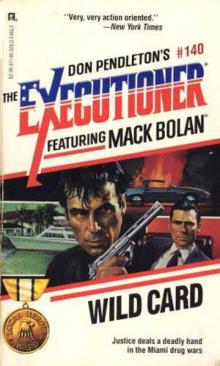 Wild Card
Wild Card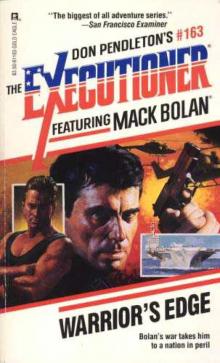 Warrior's Edge
Warrior's Edge Blood Vortex
Blood Vortex Lethal Vengeance
Lethal Vengeance Killing Kings
Killing Kings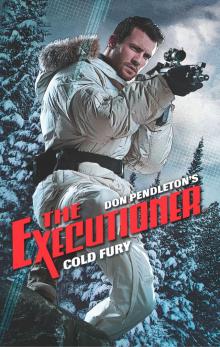 Cold Fury
Cold Fury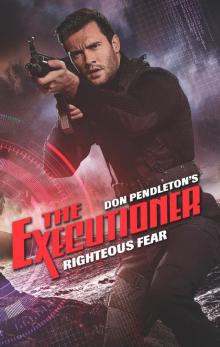 Righteous Fear
Righteous Fear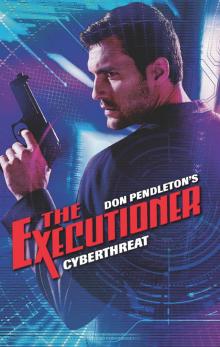 Cyberthreat
Cyberthreat Stealth Assassin
Stealth Assassin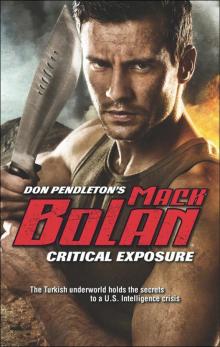 Critical Exposure
Critical Exposure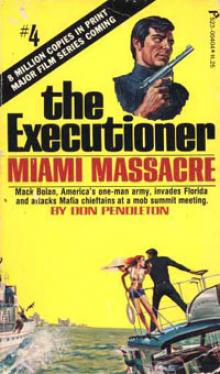 Miami Massacre te-4
Miami Massacre te-4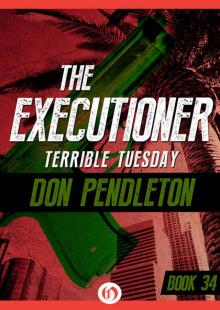 Terrible Tuesday
Terrible Tuesday Dying Art
Dying Art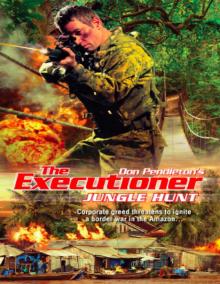 Jungle Hunt
Jungle Hunt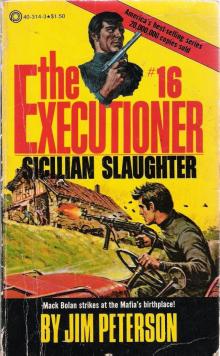 Sicilian Slaughter
Sicilian Slaughter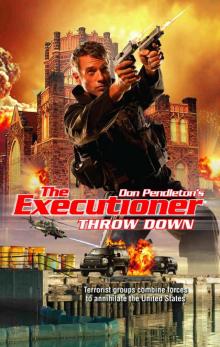 Throw Down
Throw Down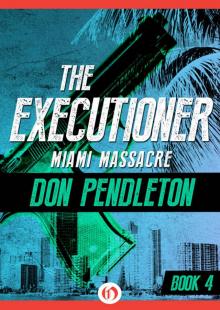 Miami Massacre
Miami Massacre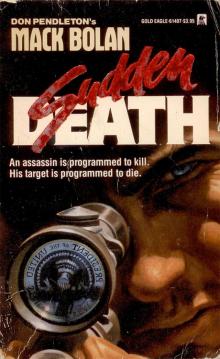 Sudden Death
Sudden Death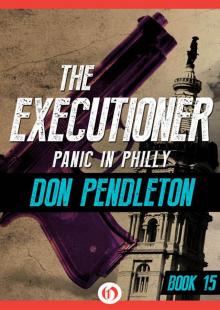 Panic in Philly
Panic in Philly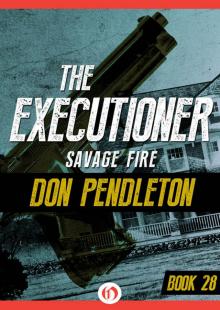 Savage Fire
Savage Fire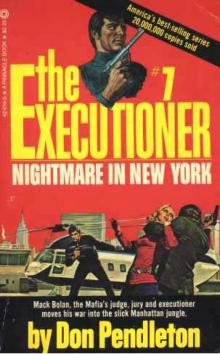 Nightmare in New York te-7
Nightmare in New York te-7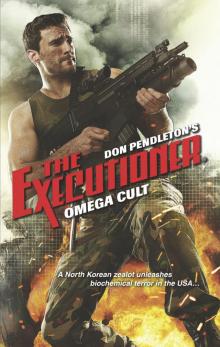 Omega Cult
Omega Cult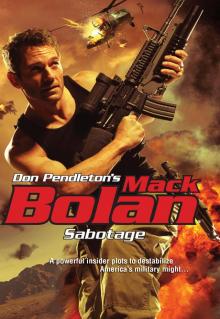 Sabotage
Sabotage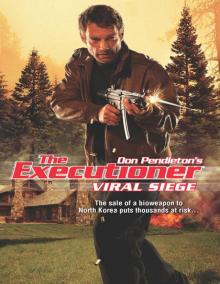 Viral Siege
Viral Siege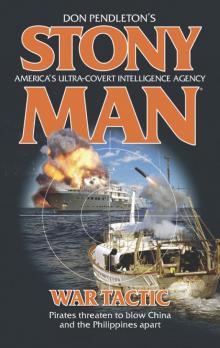 War Tactic
War Tactic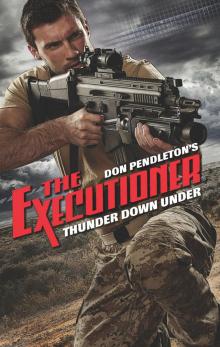 Thunder Down Under
Thunder Down Under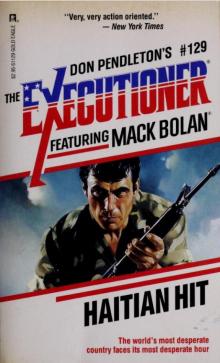 Haitian Hit
Haitian Hit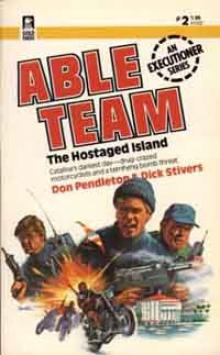 The Hostaged Island at-2
The Hostaged Island at-2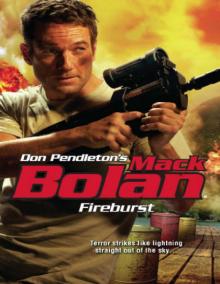 Fireburst
Fireburst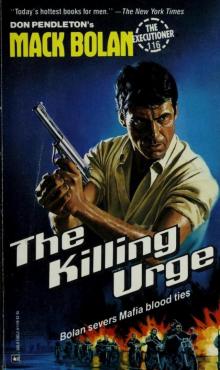 The Killing Urge
The Killing Urge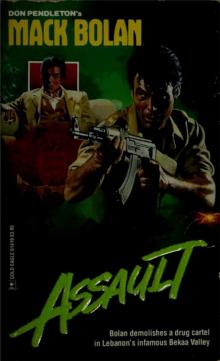 Assault
Assault Ashes To Ashes: Ashton Ford, Psychic Detective
Ashes To Ashes: Ashton Ford, Psychic Detective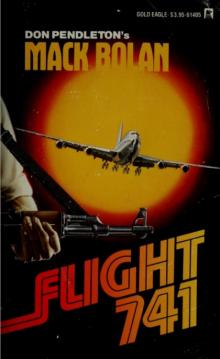 Flight 741
Flight 741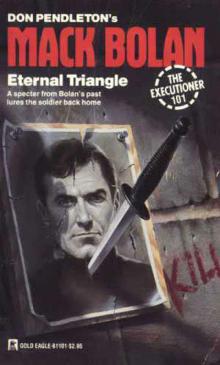 Eternal Triangle
Eternal Triangle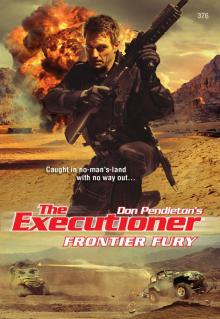 Frontier Fury
Frontier Fury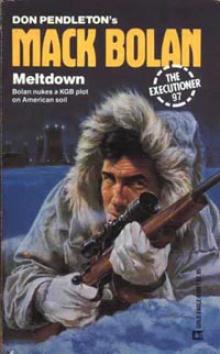 Meltdown te-97
Meltdown te-97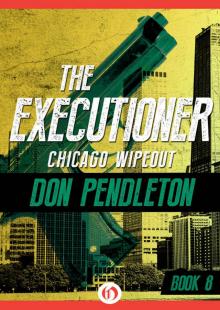 Chicago Wipeout
Chicago Wipeout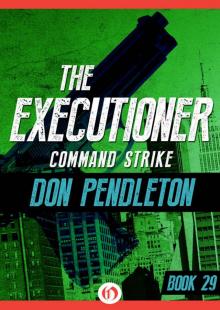 Command Strike
Command Strike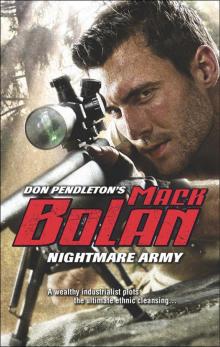 Nightmare Army
Nightmare Army Ivory Wave
Ivory Wave Combat Machines
Combat Machines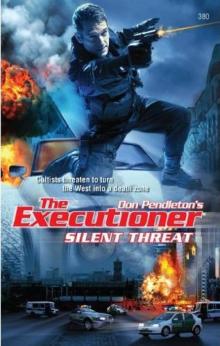 Silent Threat
Silent Threat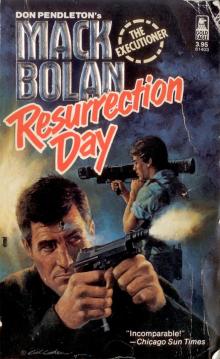 Resurrection Day
Resurrection Day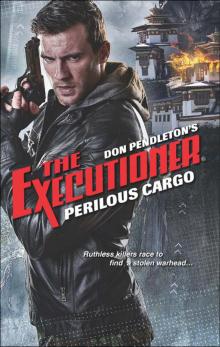 Perilous Cargo
Perilous Cargo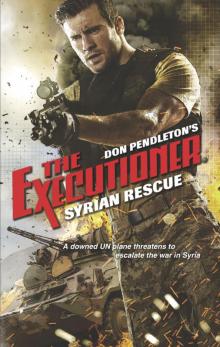 Syrian Rescue
Syrian Rescue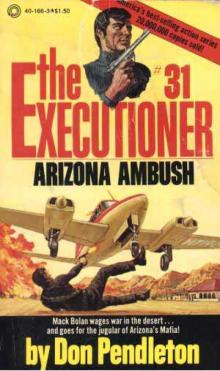 Arizona Ambush te-31
Arizona Ambush te-31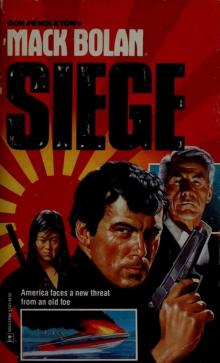 Siege
Siege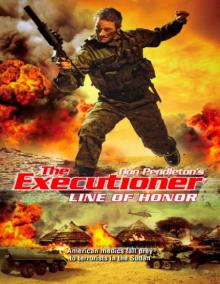 Line of Honor
Line of Honor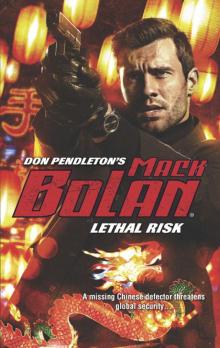 Lethal Risk
Lethal Risk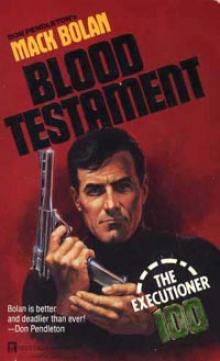 Blood Testament te-100
Blood Testament te-100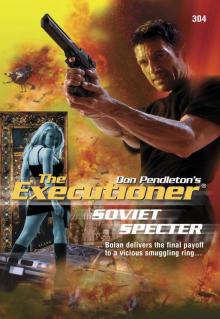 Soviet Specter
Soviet Specter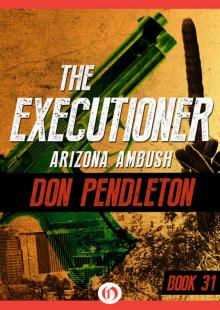 Arizona Ambush
Arizona Ambush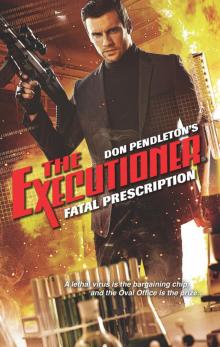 Fatal Prescription
Fatal Prescription Deep Recon
Deep Recon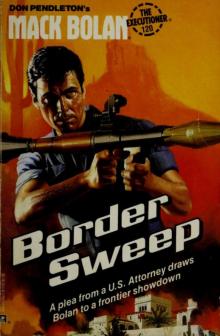 Border Sweep
Border Sweep Life to Life
Life to Life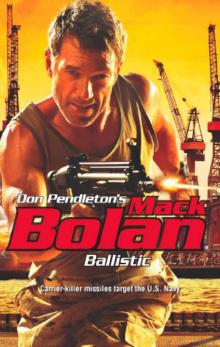 Ballistic
Ballistic Hellbinder
Hellbinder Time to Time: Ashton Ford, Psychic Detective (Ashton Ford Series Book 6)
Time to Time: Ashton Ford, Psychic Detective (Ashton Ford Series Book 6)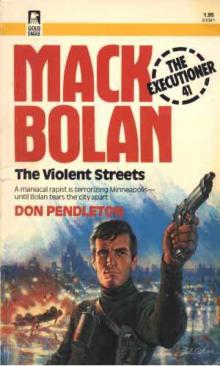 The Violent Streets te-41
The Violent Streets te-41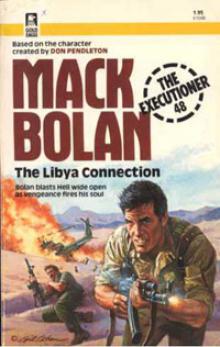 The Libya Connection te-48
The Libya Connection te-48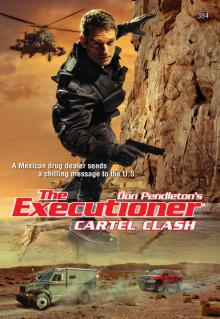 Cartel Clash
Cartel Clash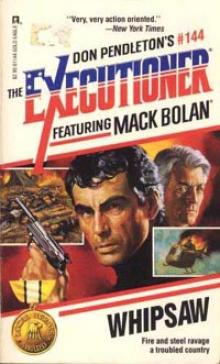 Whipsaw te-144
Whipsaw te-144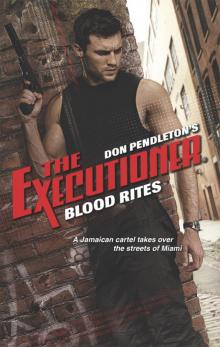 Blood Rites
Blood Rites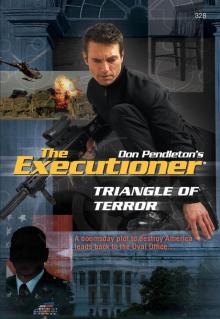 Triangle of Terror
Triangle of Terror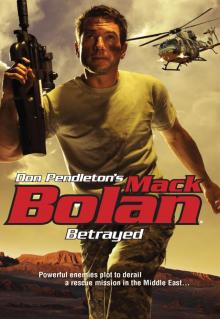 Betrayed
Betrayed San Diego Siege
San Diego Siege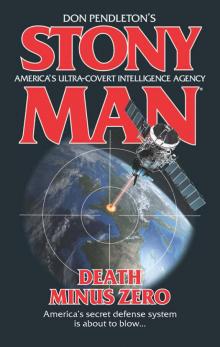 Death Minus Zero
Death Minus Zero Arctic Kill
Arctic Kill Mind to Mind: Ashton Ford, Psychic Detective
Mind to Mind: Ashton Ford, Psychic Detective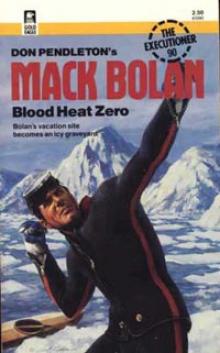 Blood Heat Zero te-90
Blood Heat Zero te-90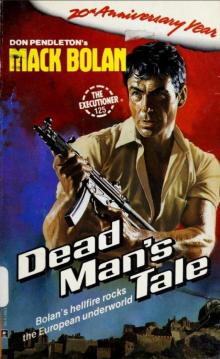 Dead Man's Tale
Dead Man's Tale Sunscream te-85
Sunscream te-85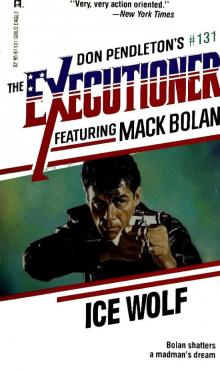 Ice Wolf
Ice Wolf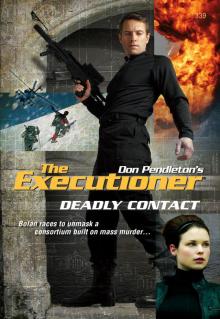 Deadly Contact
Deadly Contact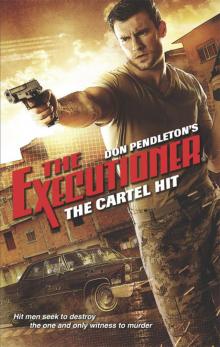 The Cartel Hit
The Cartel Hit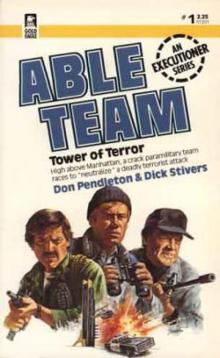 Tower of Terror at-1
Tower of Terror at-1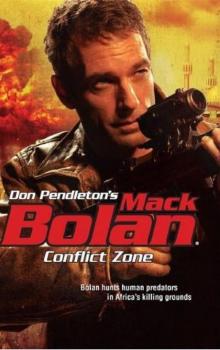 Conflict Zone
Conflict Zone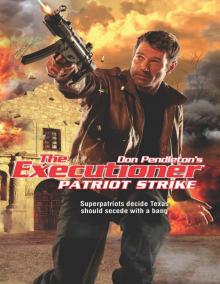 Patriot Strike
Patriot Strike Point Blank
Point Blank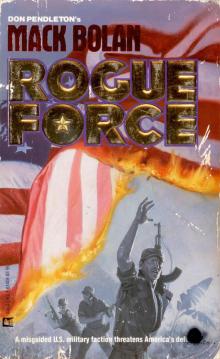 Rogue Force
Rogue Force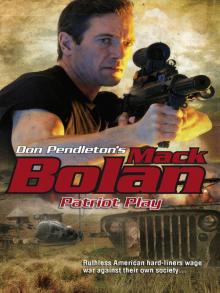 Patriot Play
Patriot Play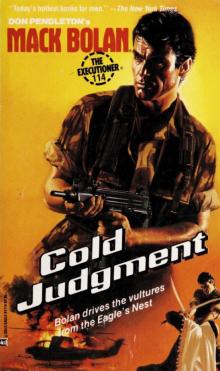 Cold Judgment
Cold Judgment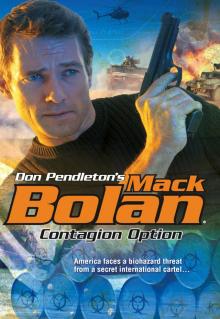 Contagion Option
Contagion Option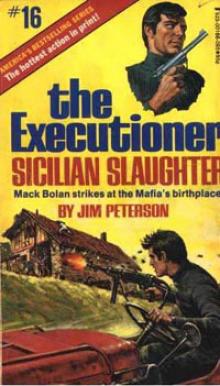 Sicilian Slaughter te-16
Sicilian Slaughter te-16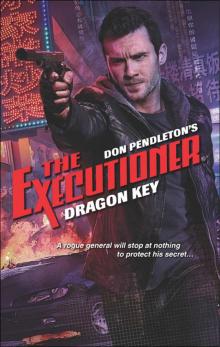 Dragon Key
Dragon Key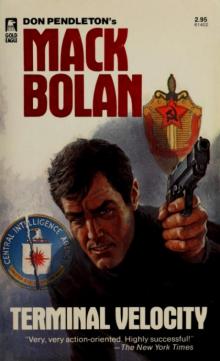 Terminal Velocity
Terminal Velocity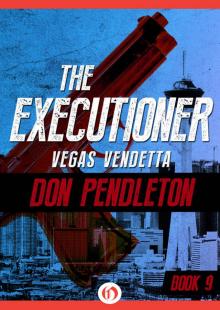 Vegas Vendetta
Vegas Vendetta Ashes To Ashes
Ashes To Ashes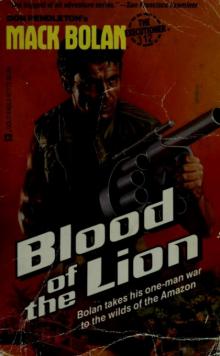 Blood of the Lion
Blood of the Lion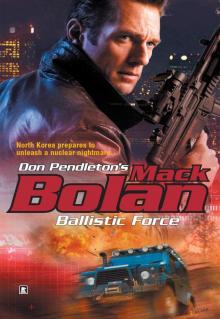 Ballistic Force
Ballistic Force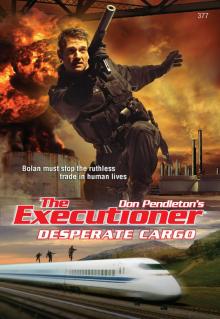 Desperate Cargo
Desperate Cargo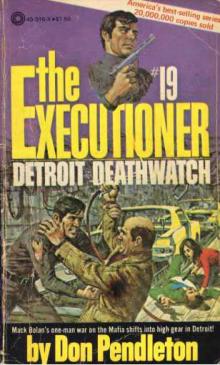 Detroit Deathwatch te-19
Detroit Deathwatch te-19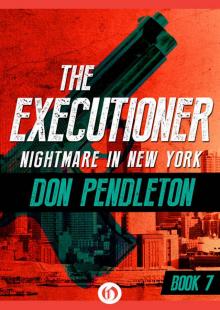 Nightmare in New York
Nightmare in New York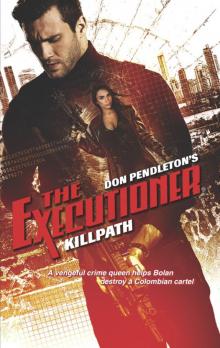 Killpath
Killpath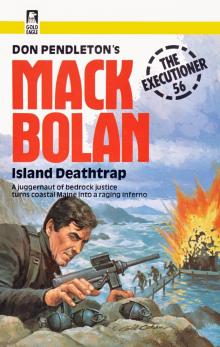 Executioner 056 - Island Deathtrap
Executioner 056 - Island Deathtrap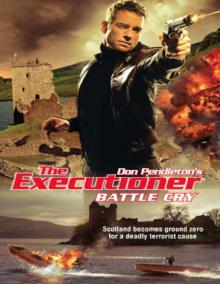 Battle Cry
Battle Cry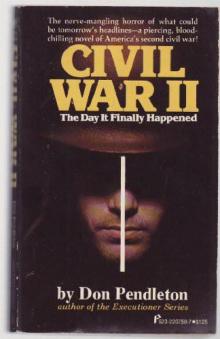 Don Pendleton - Civil War II
Don Pendleton - Civil War II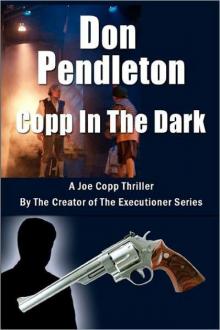 Copp In The Dark, A Joe Copp Thriller (Joe Copp Private Eye Series)
Copp In The Dark, A Joe Copp Thriller (Joe Copp Private Eye Series) China Crisis (Stony Man)
China Crisis (Stony Man)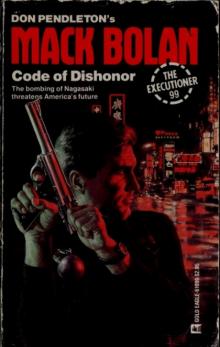 Code of Dishonor
Code of Dishonor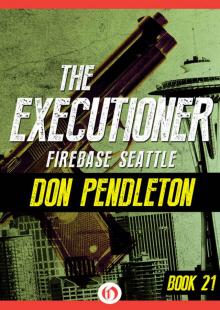 Firebase Seattle
Firebase Seattle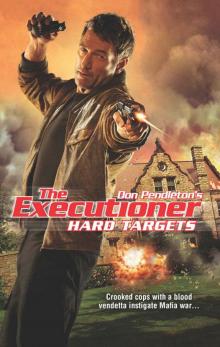 Hard Targets
Hard Targets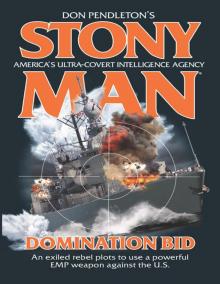 Domination Bid
Domination Bid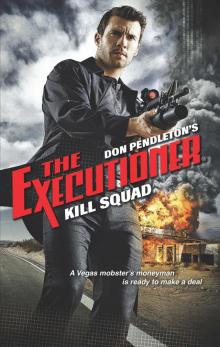 Kill Squad
Kill Squad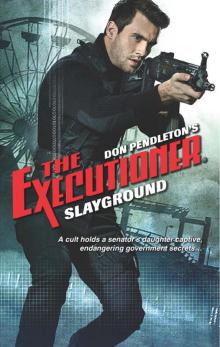 Slayground
Slayground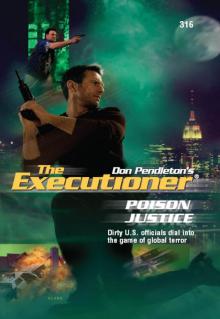 Poison Justice
Poison Justice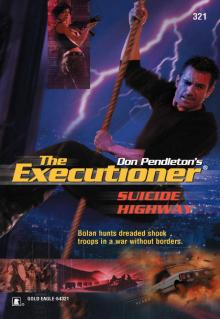 Suicide Highway
Suicide Highway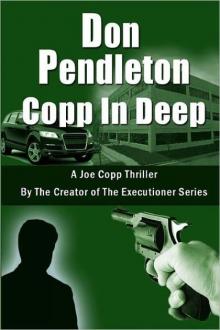 Copp In Deep, A Joe Copp Thriller (Joe Copp Private Eye Series)
Copp In Deep, A Joe Copp Thriller (Joe Copp Private Eye Series)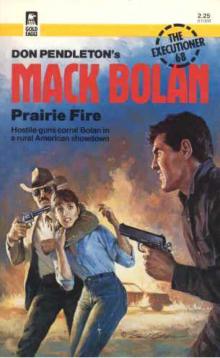 Prairie Fire
Prairie Fire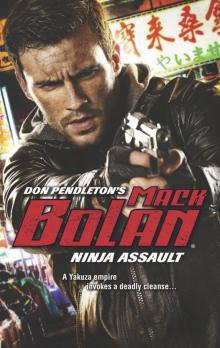 Ninja Assault
Ninja Assault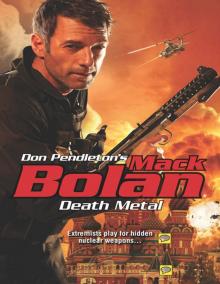 Death Metal
Death Metal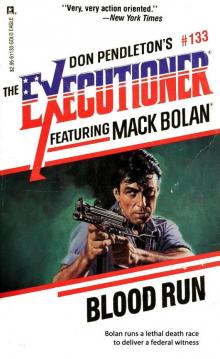 Blood Run
Blood Run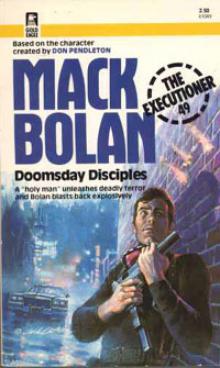 Doomsday Disciples te-49
Doomsday Disciples te-49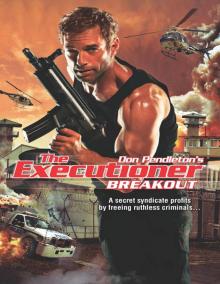 Breakout
Breakout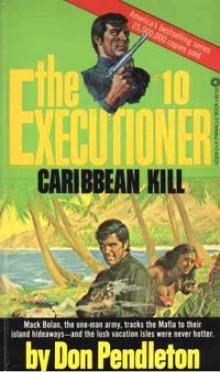 Caribbean Kill te-10
Caribbean Kill te-10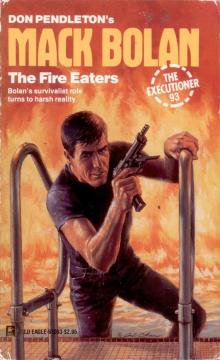 Fire Eaters
Fire Eaters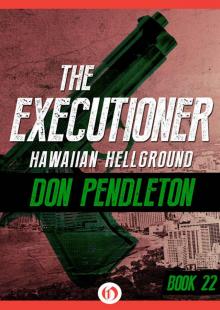 Hawaiian Hellground
Hawaiian Hellground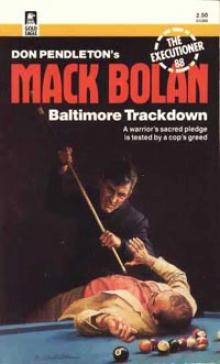 Baltimore Trackdown te-88
Baltimore Trackdown te-88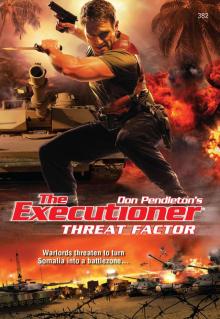 Threat Factor
Threat Factor Don Pendleton's Science Fiction Collection, 3 Books Box Set, (The Guns of Terra 10; The Godmakers; The Olympians)
Don Pendleton's Science Fiction Collection, 3 Books Box Set, (The Guns of Terra 10; The Godmakers; The Olympians)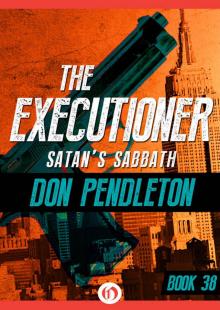 Satan’s Sabbath
Satan’s Sabbath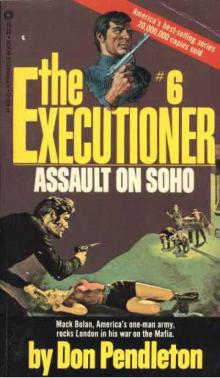 Assault on Soho te-6
Assault on Soho te-6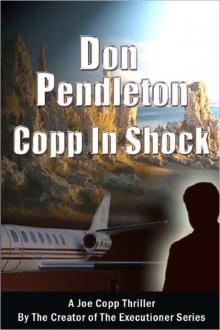 Copp In Shock, A Joe Copp Thriller (Joe Copp Private Eye Series)
Copp In Shock, A Joe Copp Thriller (Joe Copp Private Eye Series)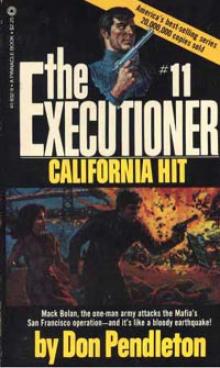 California Hit te-11
California Hit te-11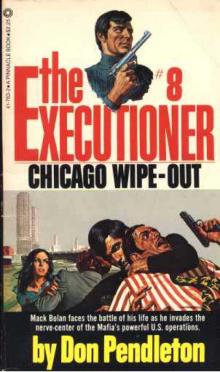 Chicago Wipe-Out te-8
Chicago Wipe-Out te-8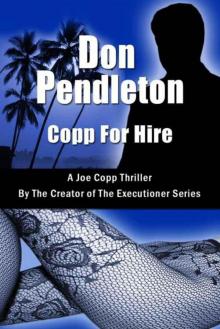 Copp For Hire, A Joe Copp Thriller (Joe Copp Private Eye Series)
Copp For Hire, A Joe Copp Thriller (Joe Copp Private Eye Series)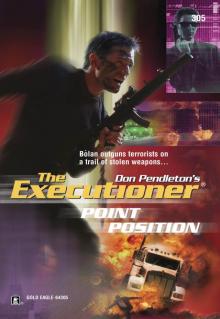 Point Position
Point Position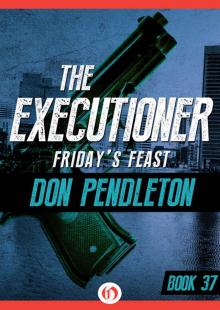 Friday’s Feast
Friday’s Feast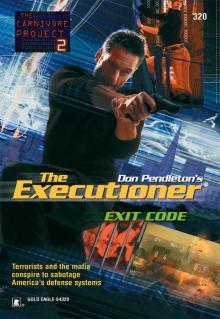 Exit Code
Exit Code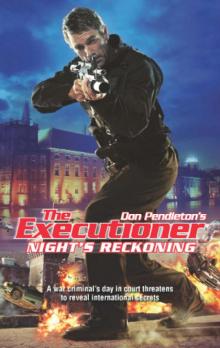 Night's Reckoning
Night's Reckoning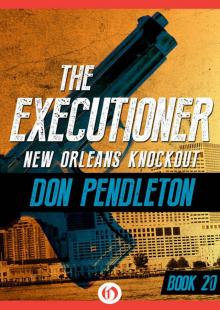 New Orleans Knockout
New Orleans Knockout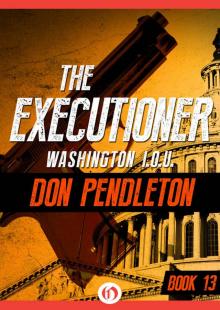 Washington I.O.U.
Washington I.O.U.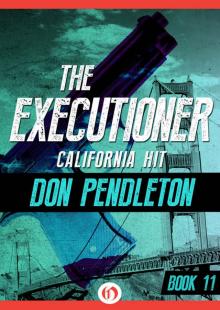 California Hit
California Hit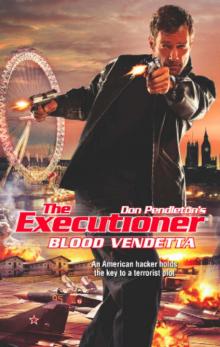 Blood Vendetta
Blood Vendetta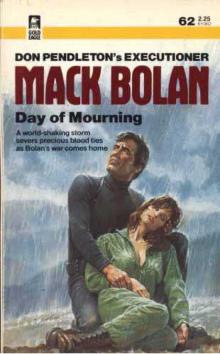 Day of Mourning te-62
Day of Mourning te-62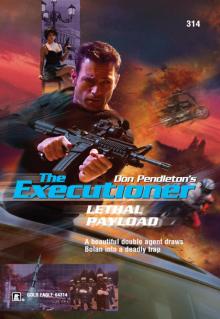 Lethal Payload
Lethal Payload Boston Blitz
Boston Blitz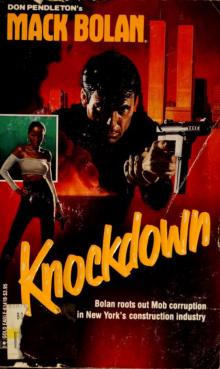 Knockdown
Knockdown Blood Sport te-46
Blood Sport te-46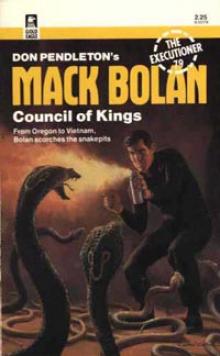 Council of Kings te-79
Council of Kings te-79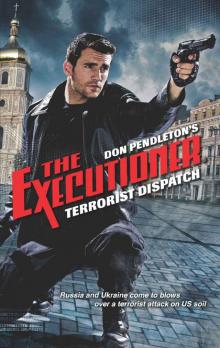 Terrorist Dispatch (Executioner)
Terrorist Dispatch (Executioner)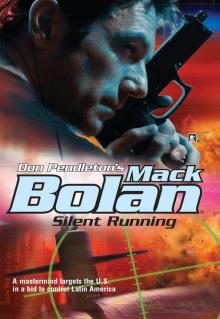 Silent Running
Silent Running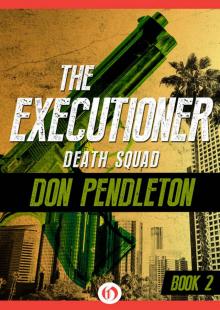 Death Squad
Death Squad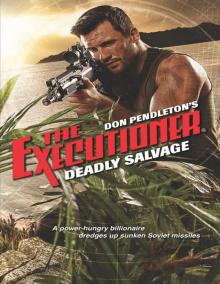 Deadly Salvage
Deadly Salvage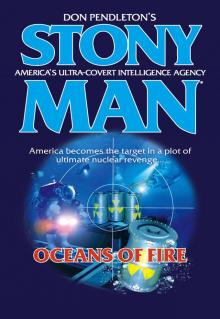 Oceans of Fire
Oceans of Fire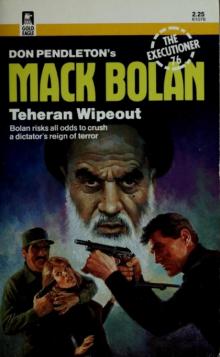 Teheran Wipeout
Teheran Wipeout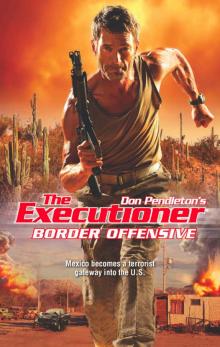 Border Offensive
Border Offensive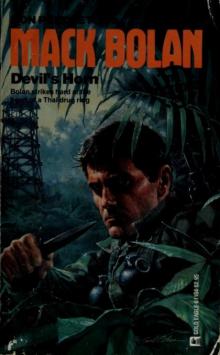 Devil's Horn
Devil's Horn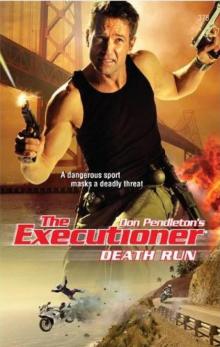 Death Run
Death Run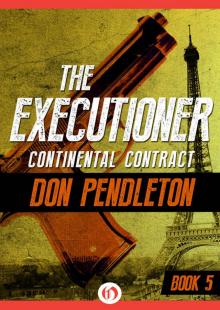 Continental Contract
Continental Contract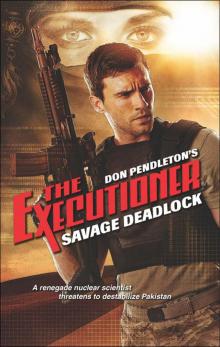 Savage Deadlock
Savage Deadlock Eye to Eye: Ashton Ford, Psychic Detective
Eye to Eye: Ashton Ford, Psychic Detective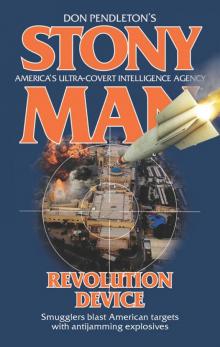 Revolution Device
Revolution Device Heart to Heart: Ashton Ford, Psychic Detective
Heart to Heart: Ashton Ford, Psychic Detective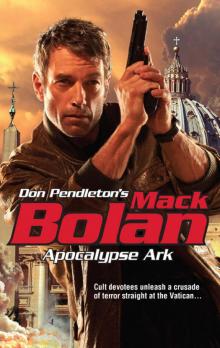 Apocalypse Ark
Apocalypse Ark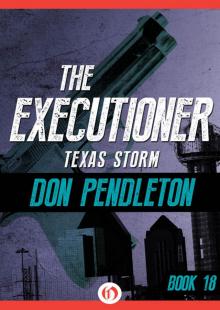 Texas Storm
Texas Storm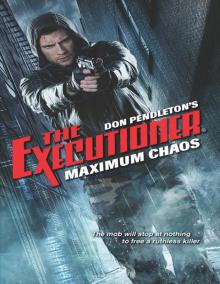 Maximum Chaos
Maximum Chaos Sensor Sweep
Sensor Sweep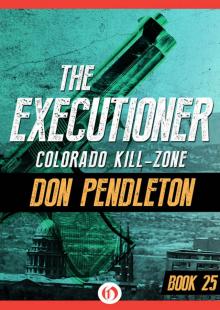 Colorado Kill-Zone
Colorado Kill-Zone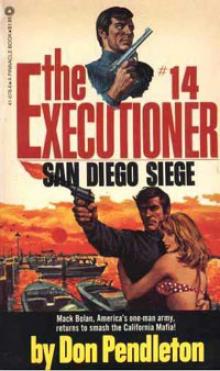 San Diego Siege te-14
San Diego Siege te-14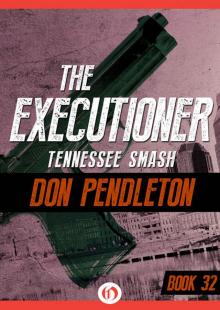 Tennessee Smash
Tennessee Smash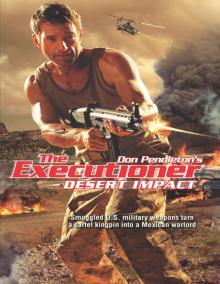 Desert Impact
Desert Impact Fire in the Sky
Fire in the Sky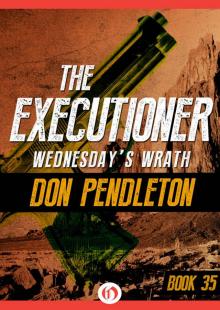 Wednesday’s Wrath
Wednesday’s Wrath Super Bolan - 001 - Stony Man Doctrine
Super Bolan - 001 - Stony Man Doctrine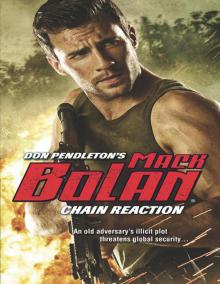 Chain Reaction
Chain Reaction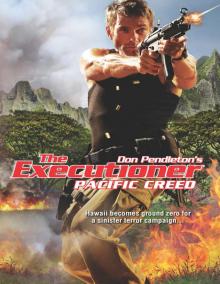 Pacific Creed
Pacific Creed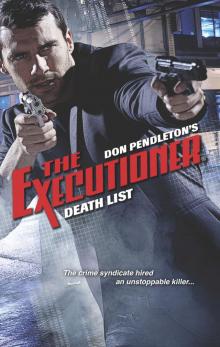 Death List
Death List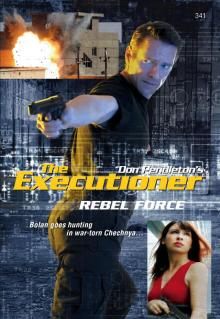 Rebel Force
Rebel Force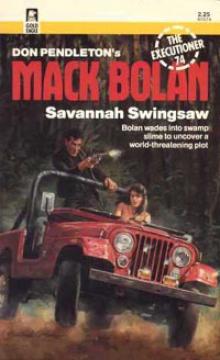 Savannah Swingsaw te-74
Savannah Swingsaw te-74 Heart to Heart
Heart to Heart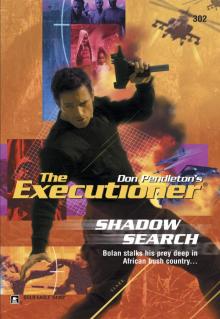 Shadow Search
Shadow Search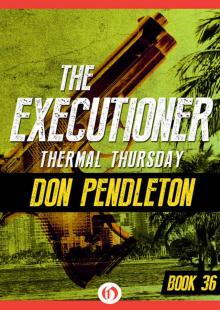 Thermal Thursday
Thermal Thursday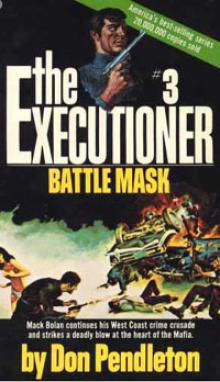 Battle Mask te-3
Battle Mask te-3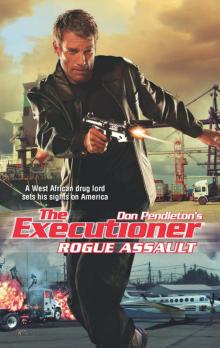 Rogue Assault
Rogue Assault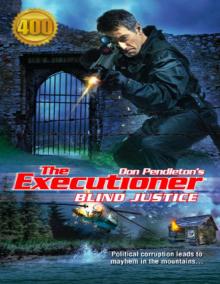 Blind Justice
Blind Justice Cold Fusion
Cold Fusion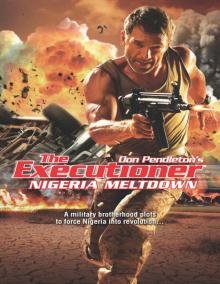 Nigeria Meltdown
Nigeria Meltdown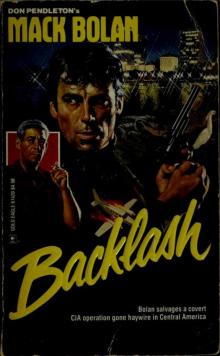 Backlash
Backlash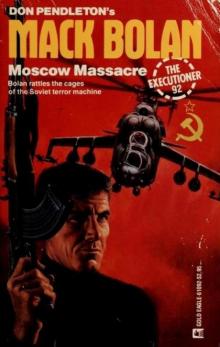 Moscow Massacre
Moscow Massacre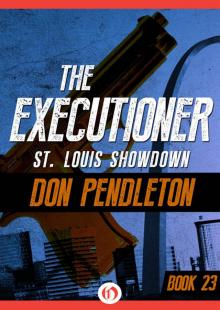 St. Louis Showdown
St. Louis Showdown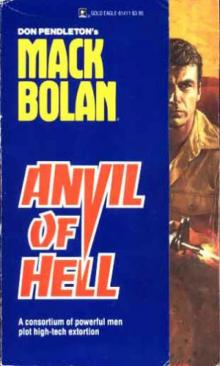 Anvil of Hell
Anvil of Hell Life to Life: Ashton Ford, Psychic Detective
Life to Life: Ashton Ford, Psychic Detective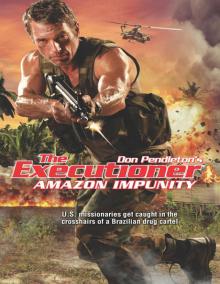 Amazon Impunity
Amazon Impunity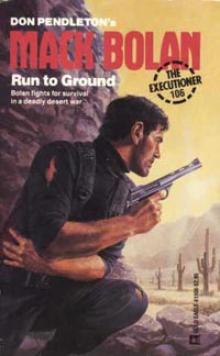 Run to Ground te-106
Run to Ground te-106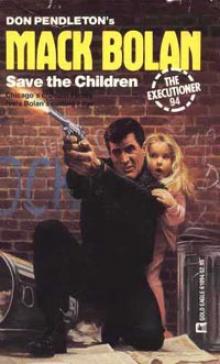 Save the Children te-94
Save the Children te-94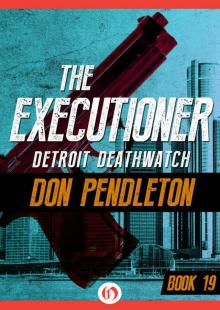 Detroit Deathwatch
Detroit Deathwatch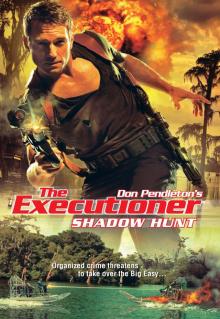 Shadow Hunt
Shadow Hunt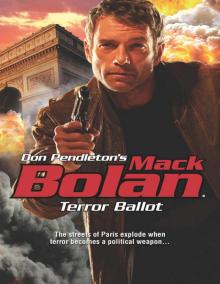 Terror Ballot
Terror Ballot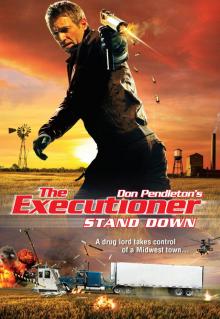 Stand Down
Stand Down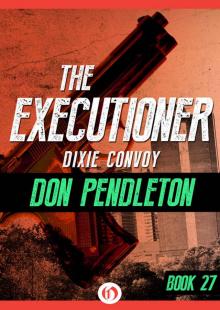 Dixie Convoy
Dixie Convoy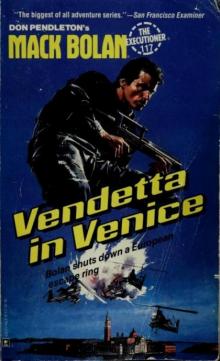 Vendetta in Venice
Vendetta in Venice War Against the Mafia
War Against the Mafia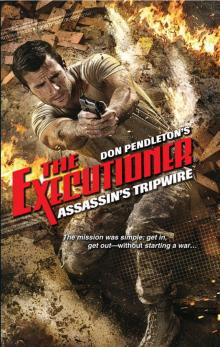 Assassin's Tripwire
Assassin's Tripwire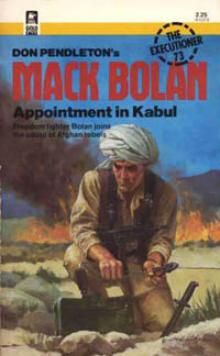 Appointment in Kabul te-73
Appointment in Kabul te-73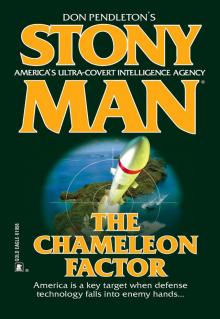 The Chameleon Factor
The Chameleon Factor Pirate Offensive
Pirate Offensive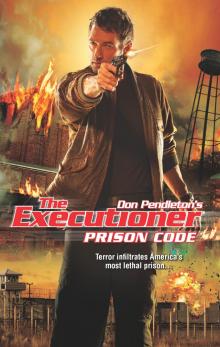 Prison Code
Prison Code Firebase Seattle te-21
Firebase Seattle te-21 Ground Zero
Ground Zero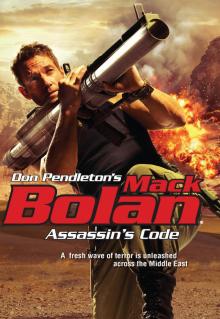 Assassin's Code
Assassin's Code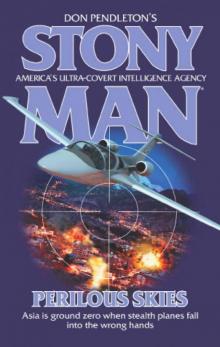 Perilous Skies (Stony Man)
Perilous Skies (Stony Man) Toxic Terrain
Toxic Terrain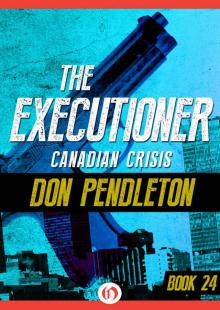 Canadian Crisis
Canadian Crisis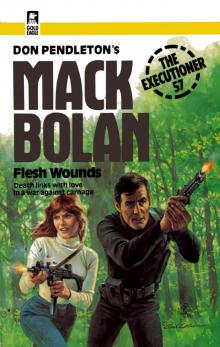 Executioner 057 - Flesh Wounds
Executioner 057 - Flesh Wounds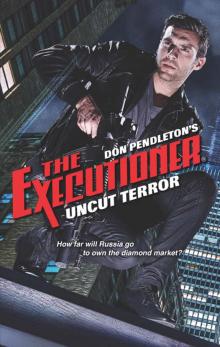 Uncut Terror
Uncut Terror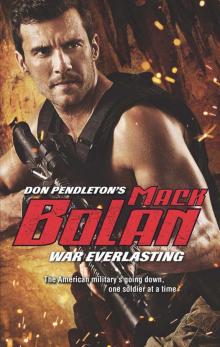 War Everlasting (Superbolan)
War Everlasting (Superbolan)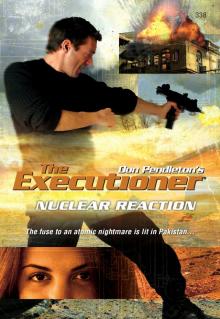 Nuclear Reaction
Nuclear Reaction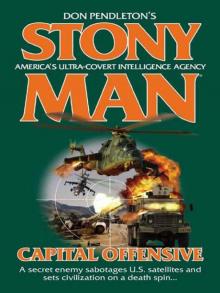 Capital Offensive (Stony Man)
Capital Offensive (Stony Man) Beirut Payback te-67
Beirut Payback te-67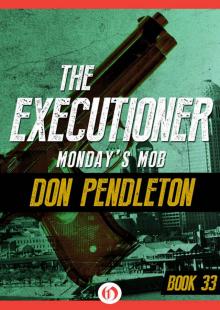 Monday’s Mob
Monday’s Mob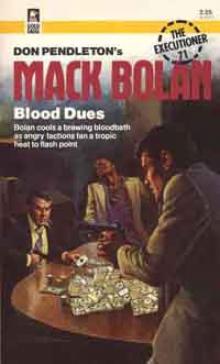 Blood Dues te-71
Blood Dues te-71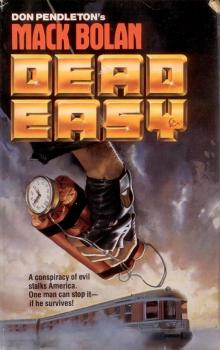 Dead Easy
Dead Easy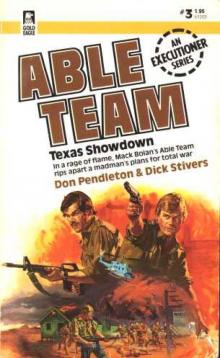 Texas Showdown at-3
Texas Showdown at-3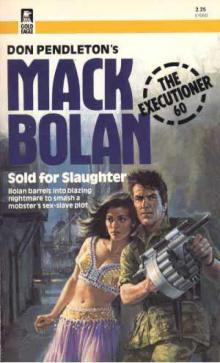 Sold for Slaughter
Sold for Slaughter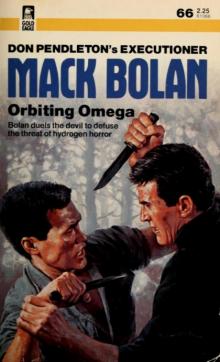 Orbiting Omega
Orbiting Omega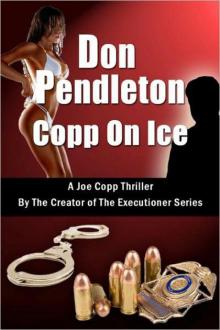 Copp On Ice, A Joe Copp Thriller (Joe Copp Private Eye Series)
Copp On Ice, A Joe Copp Thriller (Joe Copp Private Eye Series) Rebel Blast
Rebel Blast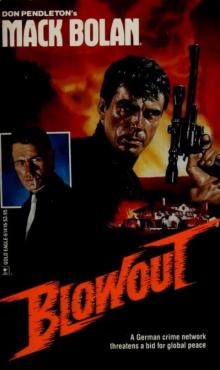 Blowout
Blowout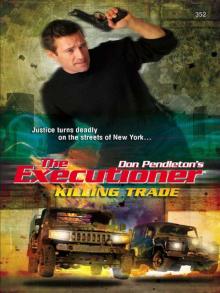 Killing Trade
Killing Trade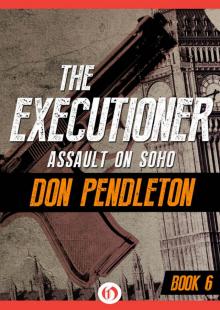 Assault on Soho
Assault on Soho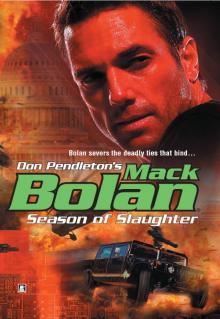 Season of Slaughter
Season of Slaughter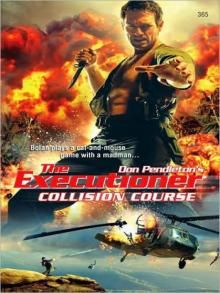 Collision Course
Collision Course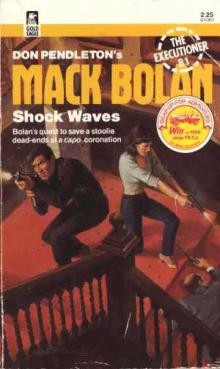 Shock Waves
Shock Waves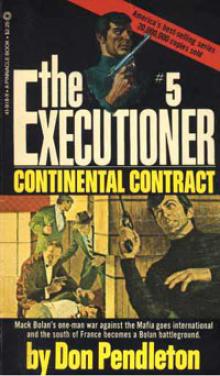 Continental Contract te-5
Continental Contract te-5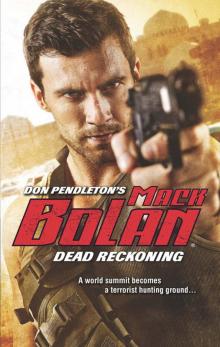 Dead Reckoning
Dead Reckoning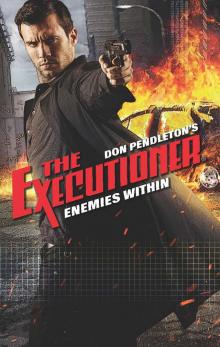 Enemies Within
Enemies Within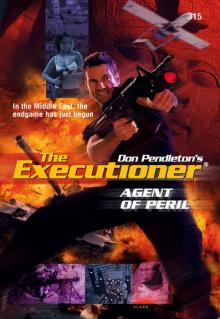 Agent of Peril
Agent of Peril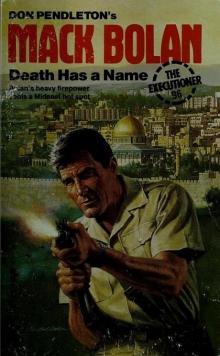 Death Has a Name
Death Has a Name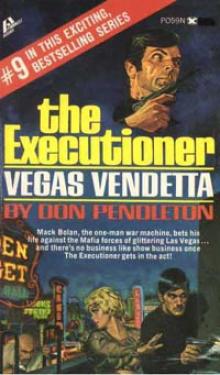 Vegas Vendetta te-9
Vegas Vendetta te-9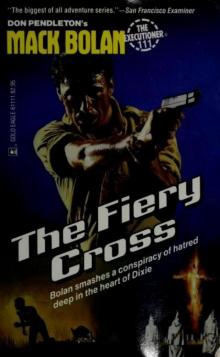 The Fiery Cross
The Fiery Cross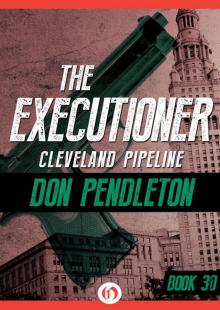 Cleveland Pipeline
Cleveland Pipeline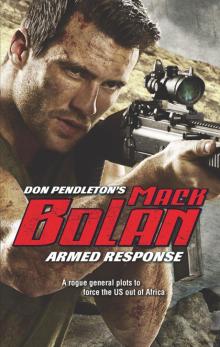 Armed Response
Armed Response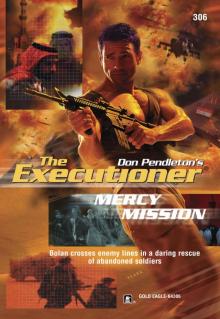 Mercy Mission
Mercy Mission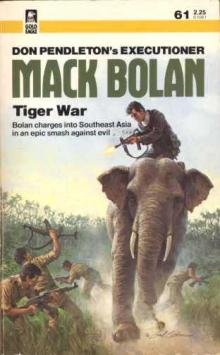 Tiger War te-61
Tiger War te-61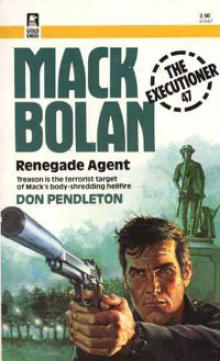 Renegade Agent te-47
Renegade Agent te-47 Damage Radius
Damage Radius Eye to Eye
Eye to Eye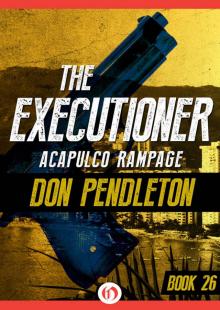 Acapulco Rampage
Acapulco Rampage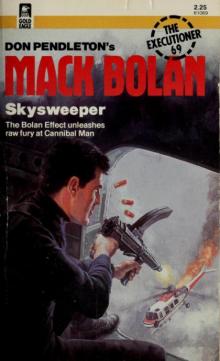 Skysweeper
Skysweeper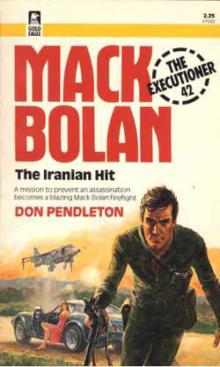 The Iranian Hit te-42
The Iranian Hit te-42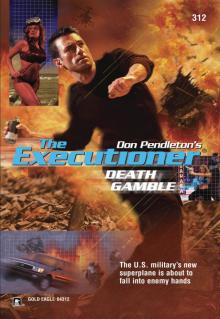 Death Gamble
Death Gamble Rebel Trade
Rebel Trade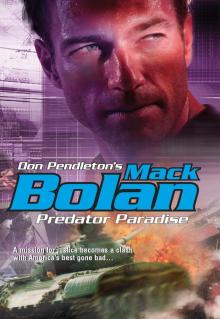 Predator Paradise
Predator Paradise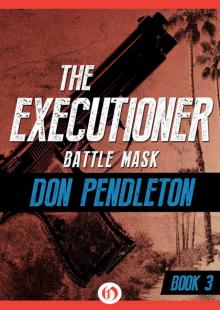 Battle Mask
Battle Mask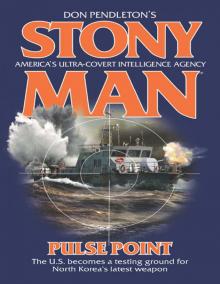 Pulse Point
Pulse Point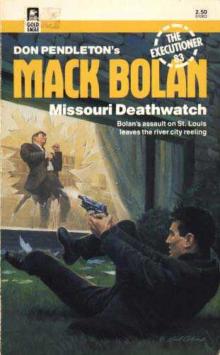 Missouri Deathwatch
Missouri Deathwatch Blood Tide
Blood Tide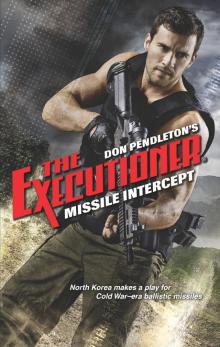 Missile Intercept
Missile Intercept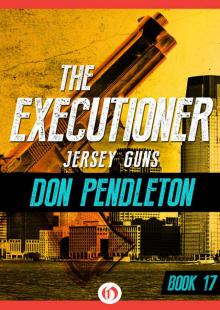 Jersey Guns
Jersey Guns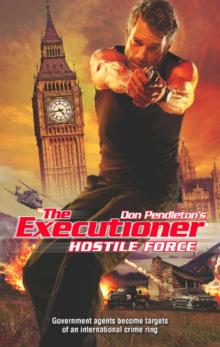 Hostile Force
Hostile Force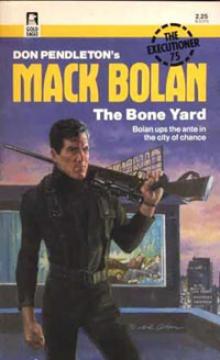 The Bone Yard te-75
The Bone Yard te-75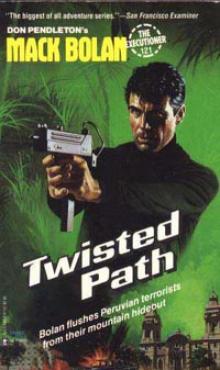 Twisted Path te-121
Twisted Path te-121 Mind to Mind
Mind to Mind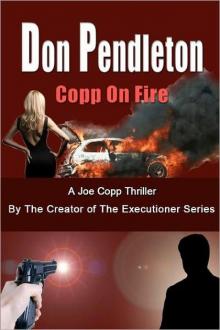 Copp On Fire, A Joe Copp Thriller (Joe Copp, Private Eye Series)
Copp On Fire, A Joe Copp Thriller (Joe Copp, Private Eye Series)